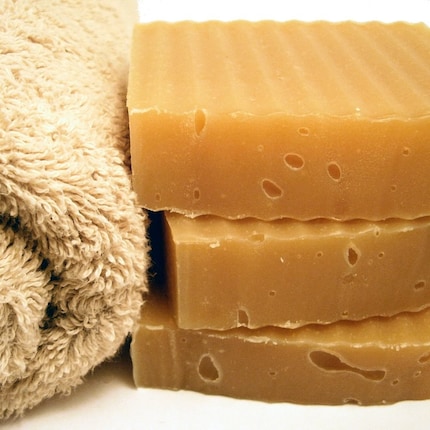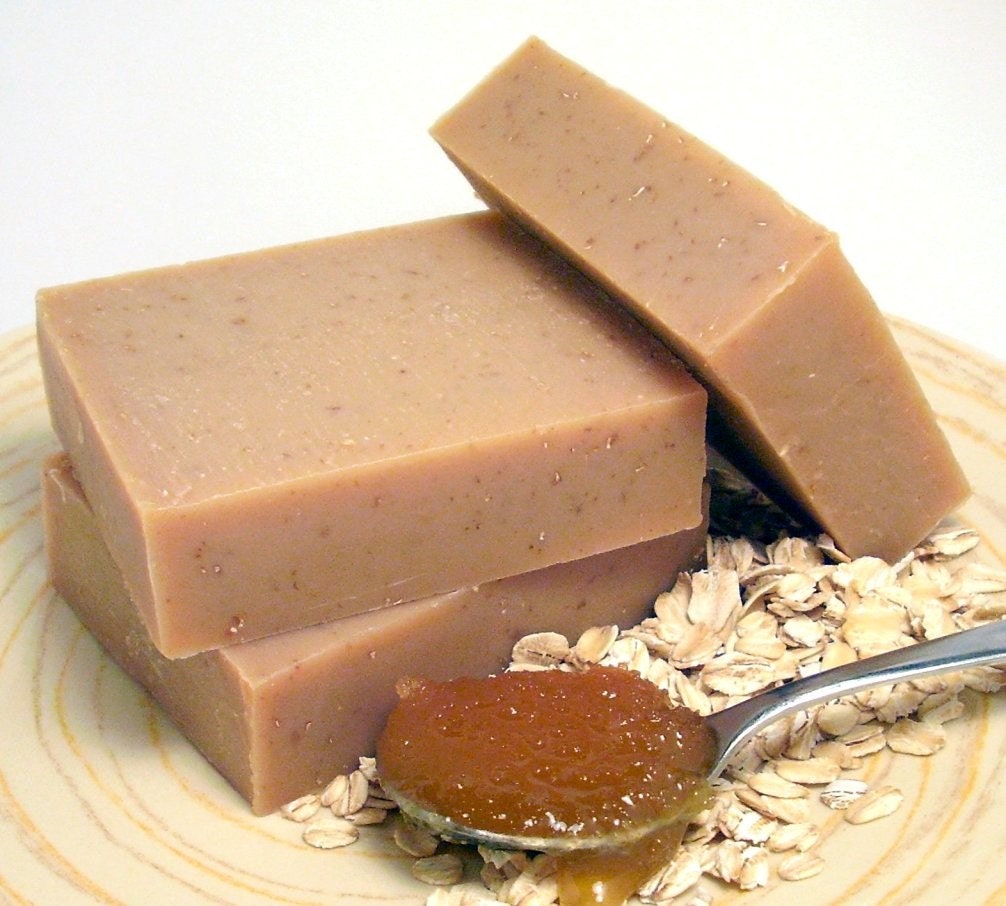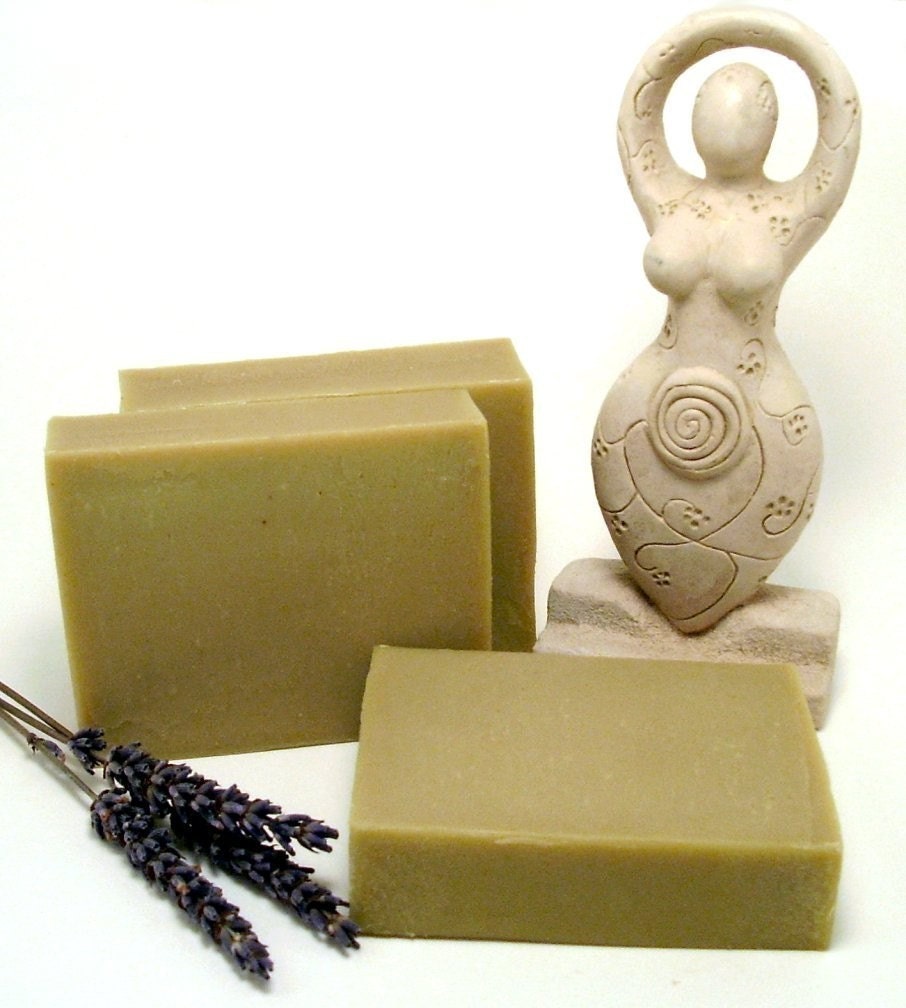 Cold process soap, by simple explanation, is the combination of an alkali solution with fats; the chemical reaction between the alkali (usually sodium hydroxide) and the fat(s) creates an anionic surfactant also known as soap. Soap can be derived from either vegetable fats, like olive oil and palm oil; or animal fats like lard or tallow.
Cold process soap, by simple explanation, is the combination of an alkali solution with fats; the chemical reaction between the alkali (usually sodium hydroxide) and the fat(s) creates an anionic surfactant also known as soap. Soap can be derived from either vegetable fats, like olive oil and palm oil; or animal fats like lard or tallow.When choosing which fats to use in soap, it is important to take into consideration the fatty acid profile of each fat source. The seven most common fatty acids a formulator will look at when comprising a formulation are: Oleic, Linoleic, Lauric, Palmitic, Myristic, Stearic and Ricinoleic. Each of these fatty acids imparts a different quality in the finished soap.
· Linoleic – skin-conditioning, rinses clean, moisturizing, contains Omega 3 fatty acids.
· Oleic – moisturizing, good for mature skin.
· Lauric – aids lather production. Too much can be drying.
· Palmitic – hardness of finished bar of soap, aids in stabilizing lather. Too much can be drying.
· Myristic – good base oils, moisturizing.
· Stearic – hard finished bar of soap.
· Ricinoleic – aid in producing, clean rinsing. Too much can yield softer soap.
A good online calculator for assistance in formulating and fatty acid composition of base oils is: www.soapcalc.com.
 When researching the use of fats derived from vegetable sources versus fats derived from animal sources for developing a proprietary formulation for Moon Maiden Soap's line of products, I found a unique distinction between the finished product and how it performs. Animal fats (or AO's) typically produce a harder finished bar of soap which will last longer on average in the shower when properly cared for. Soaps formulated with animal fats like lard or tallow also seem to be more moisturizing and conditioning to the skin than the soaps formulated with all vegetable fats (or VO's) because of their high percentage of oleic and linoleic fatty acids. My initial base formulation for my handmade soap line contained the animal fats of lard and tallow. I also created a specialty bar of soap using a high percentage of lard in addition to emu oil for those who are plagued with skin conditions or severely dry skin. The feedback I have received on the specialty bar has been very positive and it continues to be the single best selling soap in my entire line.
When researching the use of fats derived from vegetable sources versus fats derived from animal sources for developing a proprietary formulation for Moon Maiden Soap's line of products, I found a unique distinction between the finished product and how it performs. Animal fats (or AO's) typically produce a harder finished bar of soap which will last longer on average in the shower when properly cared for. Soaps formulated with animal fats like lard or tallow also seem to be more moisturizing and conditioning to the skin than the soaps formulated with all vegetable fats (or VO's) because of their high percentage of oleic and linoleic fatty acids. My initial base formulation for my handmade soap line contained the animal fats of lard and tallow. I also created a specialty bar of soap using a high percentage of lard in addition to emu oil for those who are plagued with skin conditions or severely dry skin. The feedback I have received on the specialty bar has been very positive and it continues to be the single best selling soap in my entire line.I quickly realized, however, that I was missing an opportunity to service a very large clientele who prefer not to use products containing fats from animal sources. I decided to experiment with different formulations containing only vegetable fats to see if could produce a finished product that would be as liked and accepted as my AO soap line. I believe I have achieved this goal because at this time, I have a loyal following for both my AO soaps as well as my VO soaps. Even my AO customers have used soap from my VO line and report that they enjoy both products but each is distinct in its own way. Soaps made with carefully selected vegetable oils provide fabulous skin benefit like moisture and conditioning. Handmade soaps, regardless of base oil preference, are much kinder and gentler to you're the skin than commercial detergent bars.
The use of animal fats in soap, especially locally-sourced and home-rendered, espouses the green movement by reducing the use of mass transit for delivery of raw materials. Locally raised, grass-fed meat is better for the environment by reducing the use of commercial farming methods and encouraging the overall health of the animal thus producing a healthier and leaner food source for human consumption. Using animal fats also adheres to the time-honored tradition of using the entire animal that has already gone to slaughter for food. Native American culture believed in wasting nothing when an animal was hunted for food and honoring the life the animal gave to sustain the tribe. Exotic tallow from sources like caribou, elk, deer, wild boar and bear make wonderful soap. While it can be difficult to find if you do not know a hunter, be sure to check with your local and state regulations before offering the finished product for sale. Some laws prohibit it.
My intention in sharing this information is not to pit AO soaps versus VO soaps; it is only to inform those I've encountered from within my client base as well as within the circle of fellow soapers I have met who have posed questions about using AO's in soaps. Often, I am asked questions like, "what is the benefit of AO in soap?" Other soapers will ask, "what qualities do AO's impart on the finished bar of soap?" It is because I carry the two distinct lines in my shop that I believe people feel comfortable asking me about using animal fats. I appreciate being able to discuss some of the more common misconceptions surrounding the use of animal fats in soap to help educate both the consumer and the soap maker.
I hope that in sharing this little bit of insight that you may be inspired to create your own formulations and perhaps even experiment with use of AO's in soap.
Footnote:
 I've had the distinct pleasure of meeting a couple from Northern Illinois who run a historically accurate, working-farm. Cyndi Muller is the owner of a Yahoo group called Tallow Soapers; a support group designed as a safe-haven for those who make soap containing AO's to discuss the practice as well as for those who wish to know more to come and learn. She and her husband, Paul, spend a great deal of time educating the public about growing your own fruits and vegetables, animal husbandry and living a self-sustaining life. It is because of the efforts of folks like this that I am even able to share my experience using AO's in soap with you today. Without their knowledge and dedication to this practice as well as passing along their passion for utilizing the entire animal we slaughter for food, I would not be as educated as I am about the subject to date.
I've had the distinct pleasure of meeting a couple from Northern Illinois who run a historically accurate, working-farm. Cyndi Muller is the owner of a Yahoo group called Tallow Soapers; a support group designed as a safe-haven for those who make soap containing AO's to discuss the practice as well as for those who wish to know more to come and learn. She and her husband, Paul, spend a great deal of time educating the public about growing your own fruits and vegetables, animal husbandry and living a self-sustaining life. It is because of the efforts of folks like this that I am even able to share my experience using AO's in soap with you today. Without their knowledge and dedication to this practice as well as passing along their passion for utilizing the entire animal we slaughter for food, I would not be as educated as I am about the subject to date.By Dana Eskes © 2008, All Rights Reserved
Proprietor, Moon Maiden Soap & Sundries
www.moonmaidensoap.com
This article may not be redistributed or reproduced in part or in whole without express prior written permission from the author.
Tallow Soapers Link: http://groups.yahoo.com/group/Tallow_Soapers










2 comments:
Lots of useful information here, thanks so much for blogging!!
:D
Thanks for including my article! :~) I hope the information is useful/helpful.
Peace,
Dana
Post a Comment